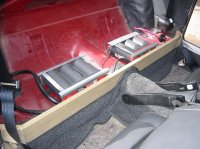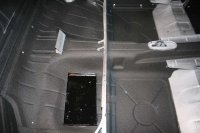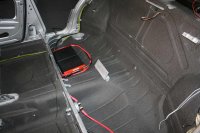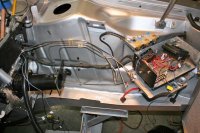I need to change my battery. While doing that, I am considering moving either in the trunk or preferably under the rear seat.
I did a search on the site and one discussion had this interesting post:
I was wondering if either Ohmess or Decoupe or anyone else who has done something similar might comment on how well (or not) this mod has worked.
Thank you very much.
Bo
I did a search on the site and one discussion had this interesting post:
I am considering copying Doug's design for my coupe. Doug has a single Oddessy PC 680 - http://www.odysseybattery.com/extreme_battery_specs.aspx
It is held in place using polyurethane mold created using Por a Cast http://www.sunbeltmaterials.com/syna...duct_lines.htm to hold it in place.
Given that folks tell me the rear strut brace doesn't do much for coupe handling, and requires drilling holds into the rear shock towers, this seems like it may be a better alternative for those of us who want to get the battery out of the front of the car.
I was wondering if either Ohmess or Decoupe or anyone else who has done something similar might comment on how well (or not) this mod has worked.
Thank you very much.
Bo
Last edited:





